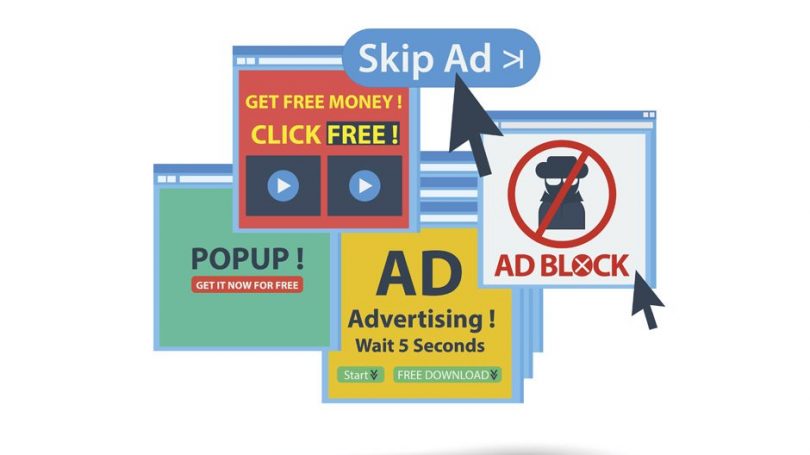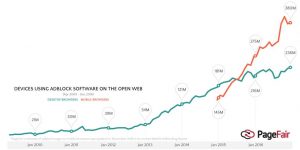The Evolution of Ad Blockers and the Impact to Online Marketing

There’s been a lot of buzz about ad blockers in the past couple of years.
A report by PageFair earlier this year explores the sharp increase in blockers since 2015 (as illustrated in the graph below). Now, in 2017, usage has grown by a staggering 30 percent to a total of 11 percent of all internet users. That equates to 615 million devices now blocking ads. So what does this mean for marketers?

First of all, it’s important to first understand what an ad blocker does and does not. An ad blocker does block ads that could potentially be served up via ad networks and media publishers to the advertiser’s target web user. This could include display ads, search ads, video pre-rolls and even some in-feed sponsored content depending on the platform and software.
However, they do not count impressions in your media buy (at least they aren’t supposed to). Therefore, you should not be charged for that impression, which is the good news for marketers because most likely, your total target universe is quite large (hundreds of thousands to millions of users). So, pointing back to Page Fair’s data, even an 11 percent decrease still leaves the potential for plenty of folks to see your ad.
Ad Blockers and the Demand for Privacy
At the end of the day, I believe marketers should be less concerned about the loss of actual eyeballs on ads, and more concerned about the user perception of your ad when they do see it. The reason ad blockers have blown up in the past two years is largely due to privacy concerns from your everyday web user. That’s because publishers have been extremely liberal with users’ information (such as internet behavior, demographics and even past purchases) in order to serve up “personalized” ads.
Quite frankly, users are sick of it. They feel taken advantage of—and as consumers ourselves, who can blame them? Publishers also haven’t helped themselves by slapping “bad ads” (that is, irrelevant, spammy, and/or intrusive) on sites, contributing to the problem the platforms are now complaining about due to lost advertising revenue from the rise in ad blockers.
Another concern for marketers is that ad blockers are working from such broad strokes without much concern for user experience. For example, people’s tolerance for certain ads can change depending on the environment they’re in and the ad’s context. A 30-second autoplay video ad in front of a TV show you want to watch may be fine, while the same ad in front of a 30-second news clip may be unacceptable.
How to Win at Online Marketing
With such a challenging environment these days, how can marketers win at online marketing? Provide value. Generate earned and owned media on your channels, then leverage paid opportunities to amplify that content. Marketing content should show effectiveness across all three of these mediums, integrated cohesively to tell a strong, engaging story for your brand. Long gone are the days when we can just shout at people with digital ads. Today’s browsers and buyers, whether B2B or B2C, seek deeper engagement and value through original content, and owned properties like your website, social media, and video. Then, when visitors do see your digital ads, they can connect back to the value you provided them.
At the end of the day, online advertising still has a very relevant place within your marketing arsenal, particularly in reinforcing your brand awareness. But to truly cut through the noise and elevate your brand, focus your core strategy on creating a meaningful experience across your entire digital footprint.
Contact Us